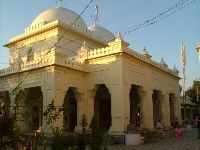Places of Interest
 |
|
Home > Places of Interest
|
Manipur is not only the gateway to the North-Eastern India but also a fascinating destination for discerning tourists. Legend says that the discovery of Manipur is the result of the delight the Gods took in dancing. It is this remarkable bid that gives Manipur a unique identity of her own. Blessed with a salubrious climate, famous for its distinctive cultural pattern and its evergreen scenic beauty, Manipur always extends a cordial invitation to the tourists...
Loktak Lake and Sendra Island:
48 km. from Imphal. A huge and beautiful stretch of water, this lake is like a miniature inland sea. From the Tourist Bungalow, set atop Sendra island, visitors can get a bird's eye view of the lake and the life on it, the fisherman and their families who live in neat huts on its shores and who make full use of their watery environment. They cast their nets on it, rear fish farms in it using nets as floating walls, harvest it for the water chestnut known as Heikak, and even build their houses on the islands of floating weed that dart around the lake.
|
 Shree Shree Govindajee Temple:
Shree Shree Govindajee Temple:
This temple adjoining the palace of the former rulers of Manipur, is a historic centre for Vaisnavites. It is a simple and beautiful structure with gold domes, a paved court and a large, raised congregation hall. The presiding deity in the centre is flanked by idols of Radha Govinda, Balaram and Krishna on one side and Jagannath, Balabhadra and Subhadra on the other.
|
Keibul Lamjao National Park:
53 kms. from Imphal and on the fringes of Loktak Lake, this is the last natural habitat of the endangered marsh-dwelling brow-antlered deer of Manipur called "Sangai". The scientific name of this deer is "Cervus eldi eldi". The uniqueness of this particular park is that it is the only floating national park in the world and the deer is also found nowhere else on earth. The park is composed of large masses of floating weed (called "Phumdi" in local dialect). Geographically the floating biomass (phumdi) encompasses an area of about 42 sq. km.The thickness of the biomass is from 0.5 to 1.5 metres. These phumdi unseemingly can suport a lot of weight. In fact, migratory fishermen bulid houses on these floating islands of weed that float around the lake. I myself have visited some of these houses (huts, to be more precise). It was quite an experience, really. Imagine going to sleep at night in one part of the lake and waking up the next morning in a different part of the lake!
|

 Shree Shree Govindajee Temple:
Shree Shree Govindajee Temple: